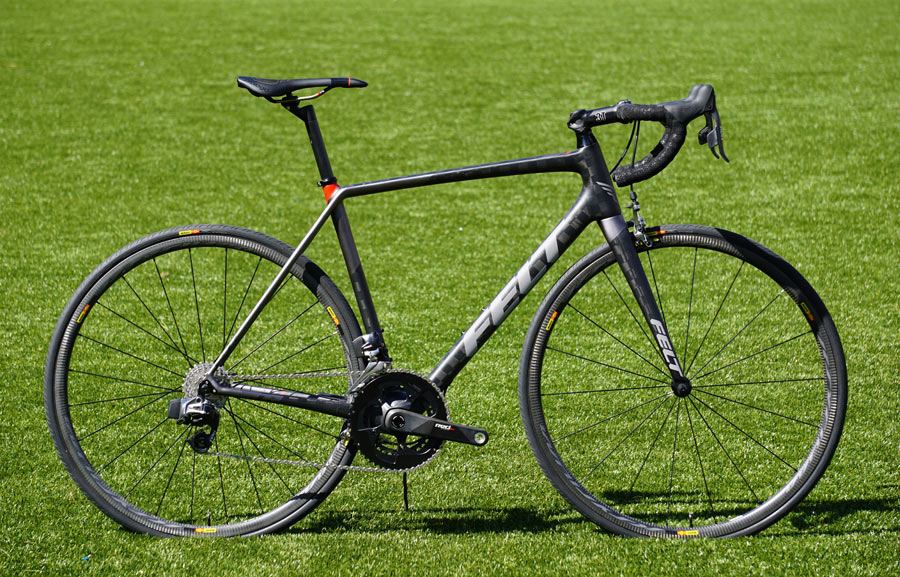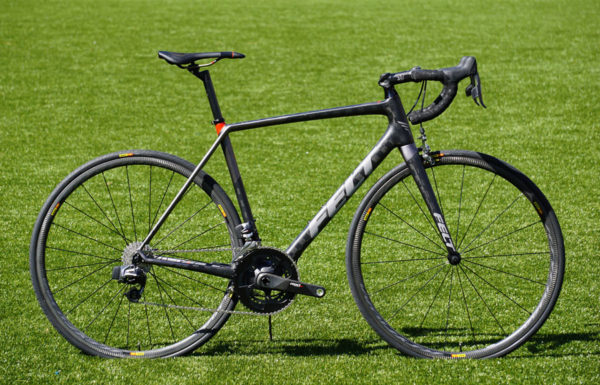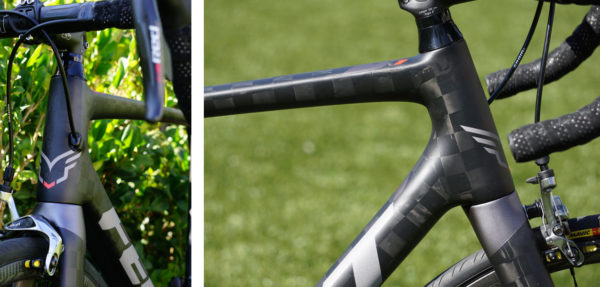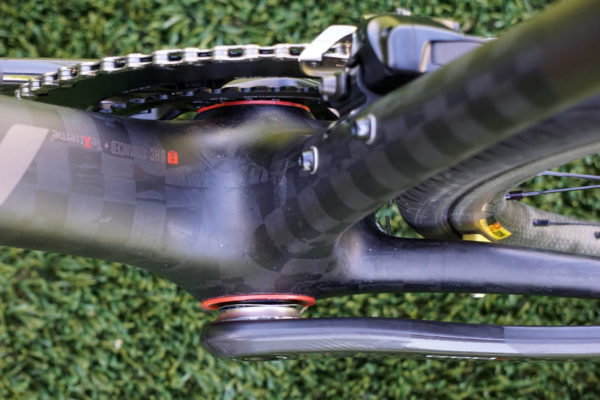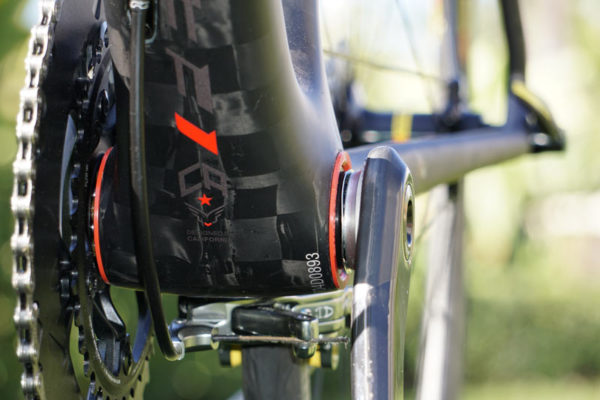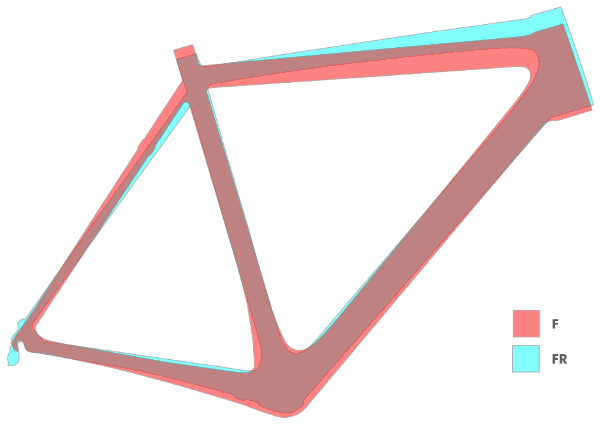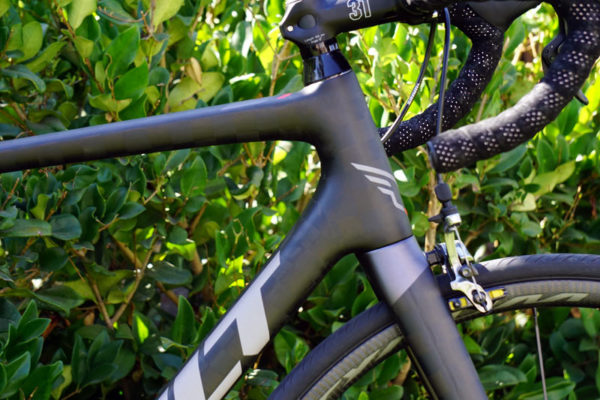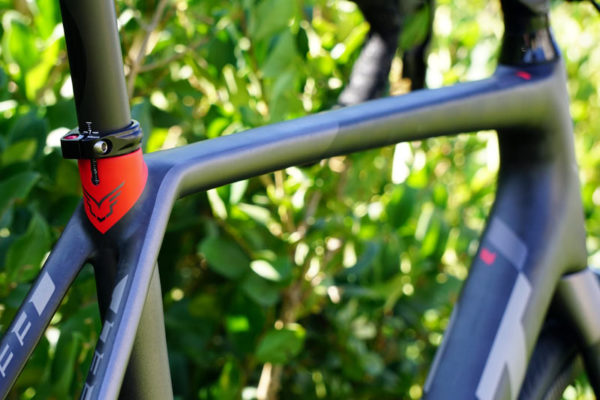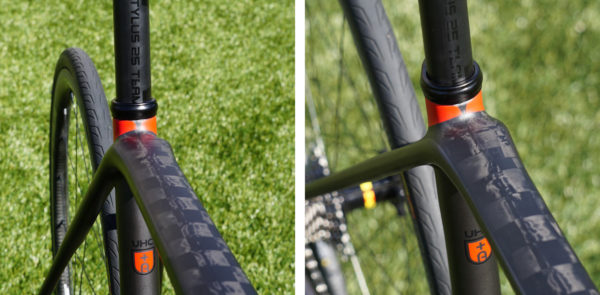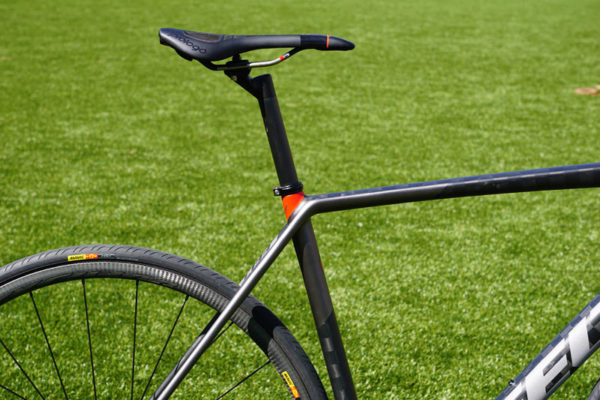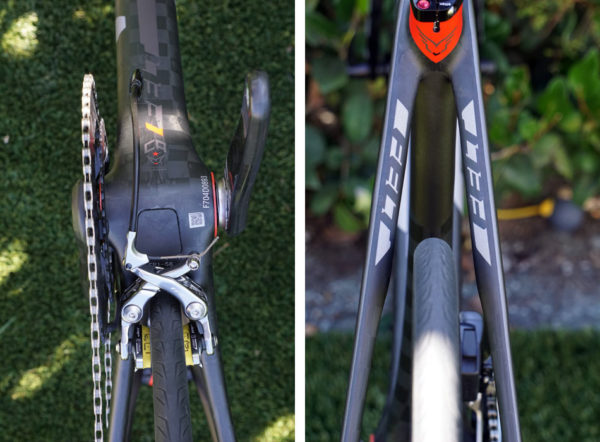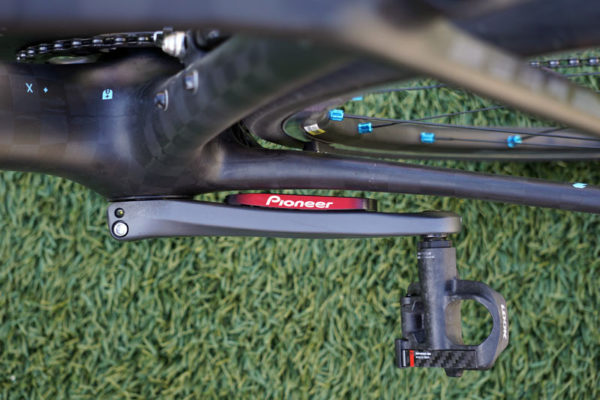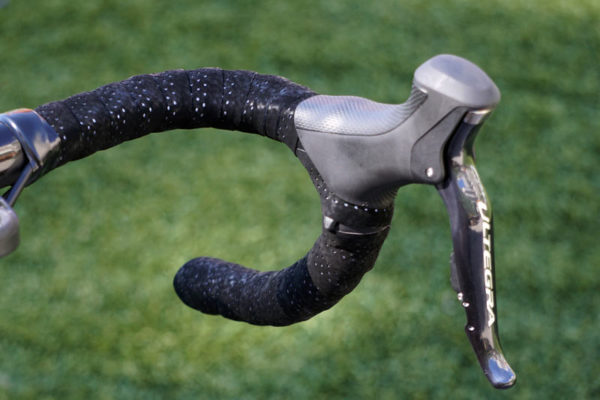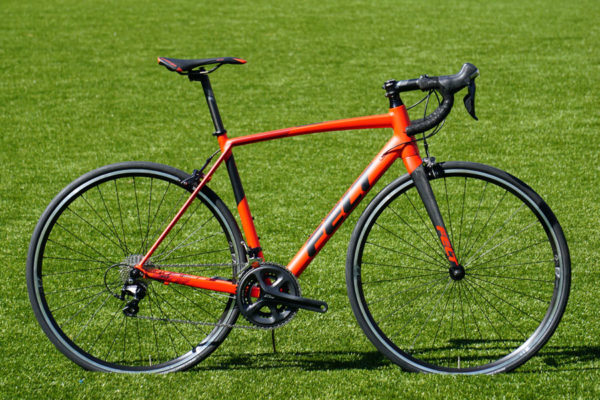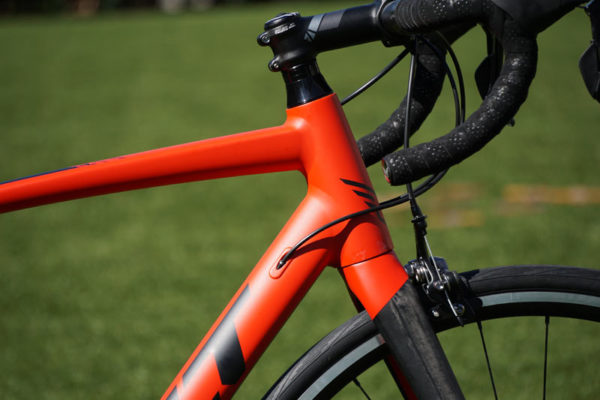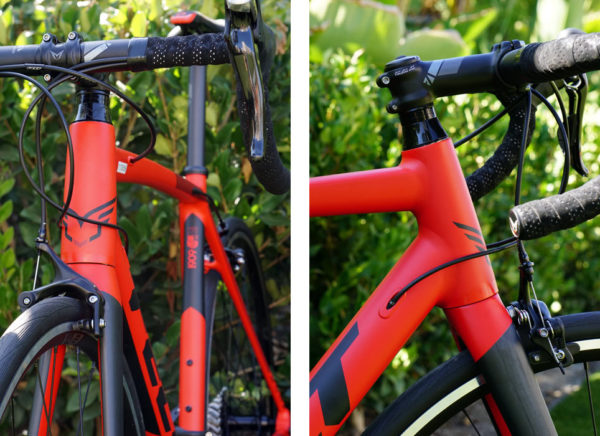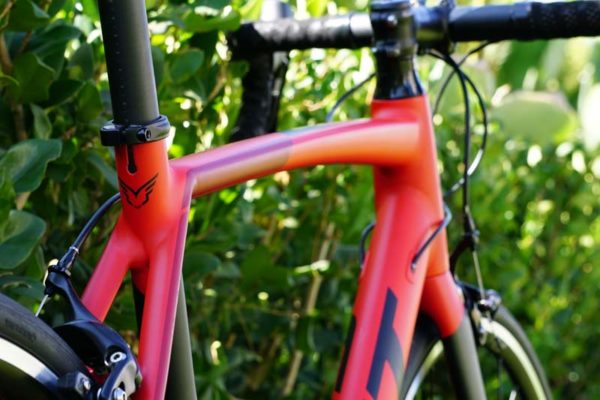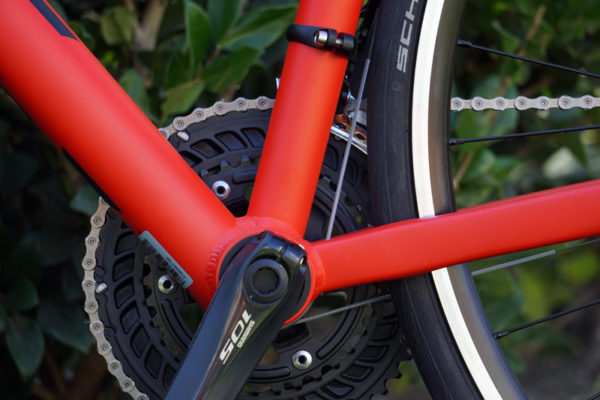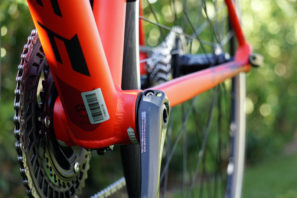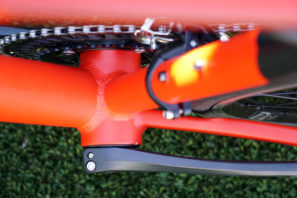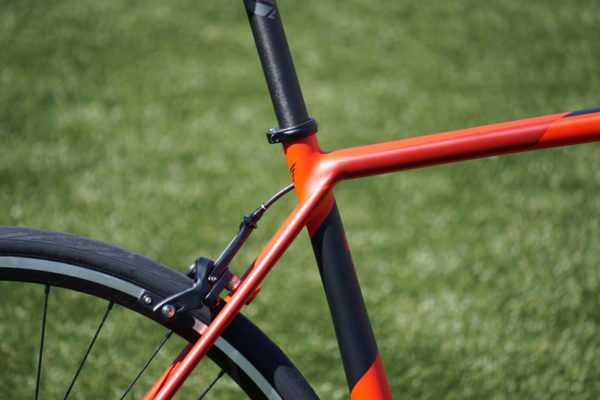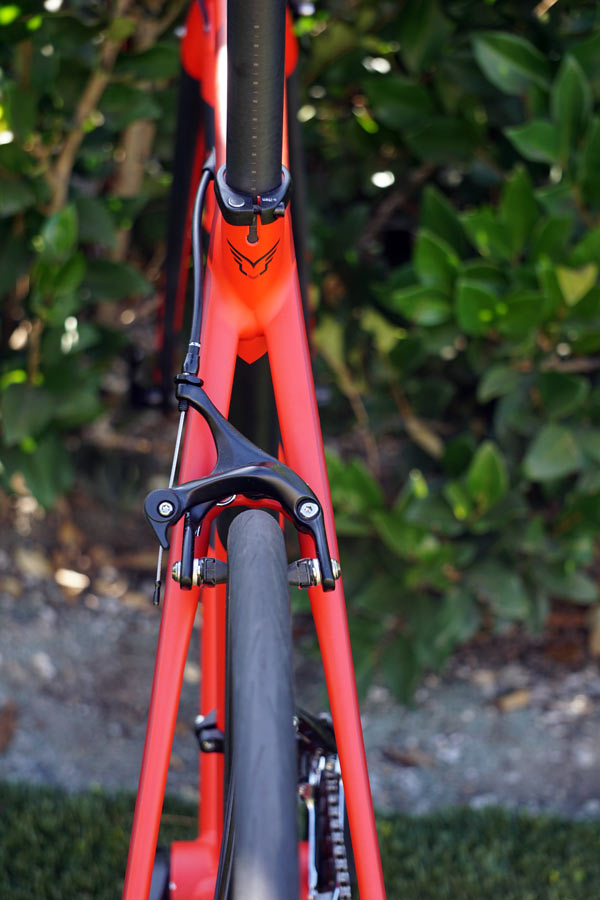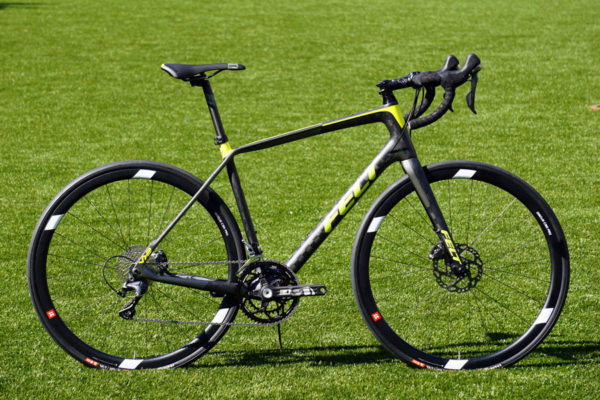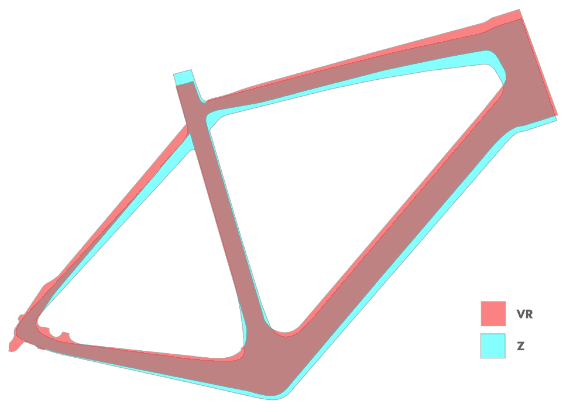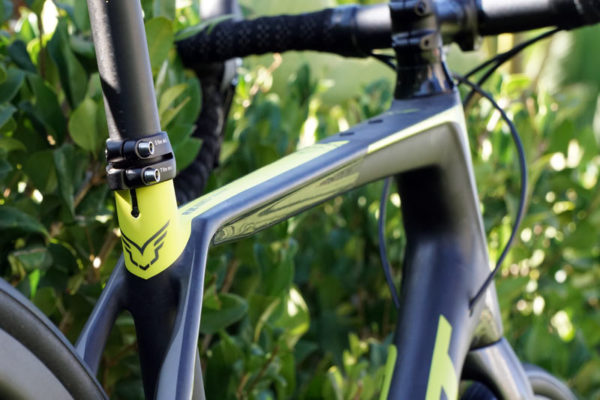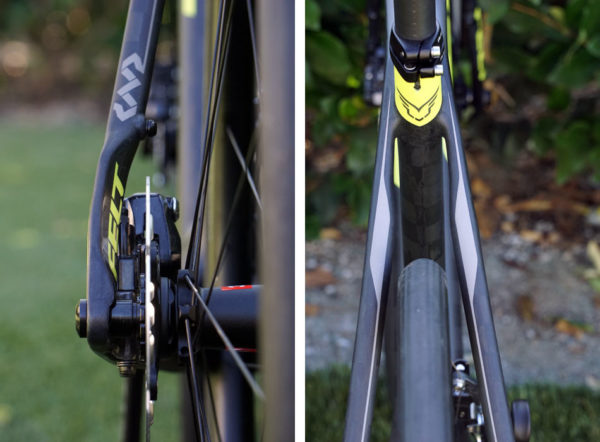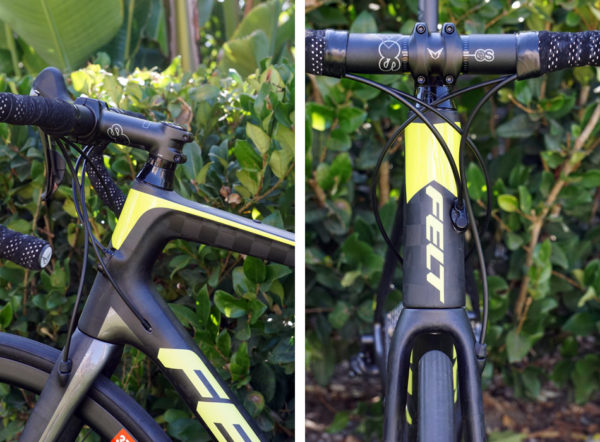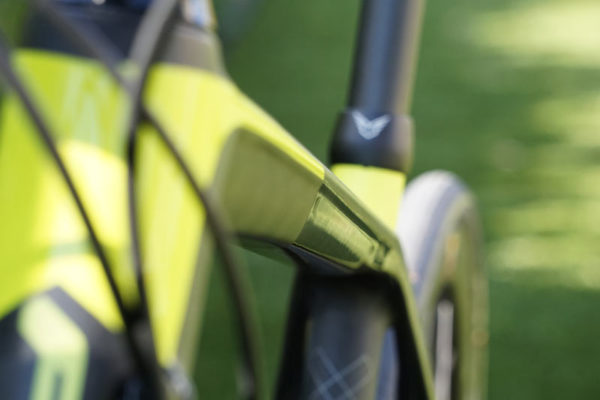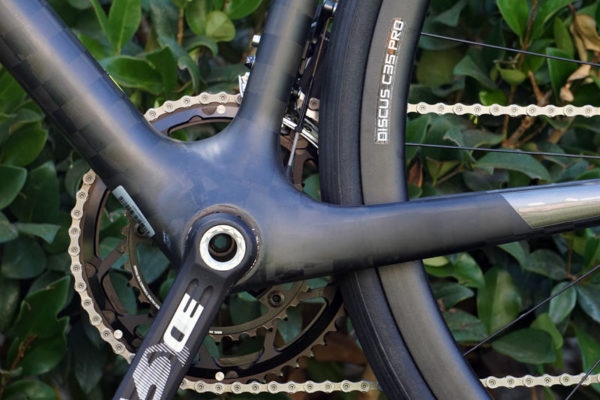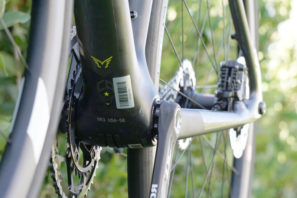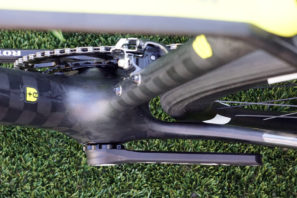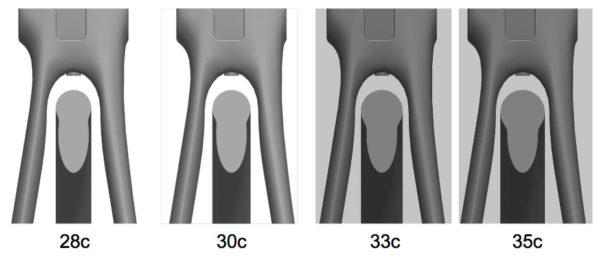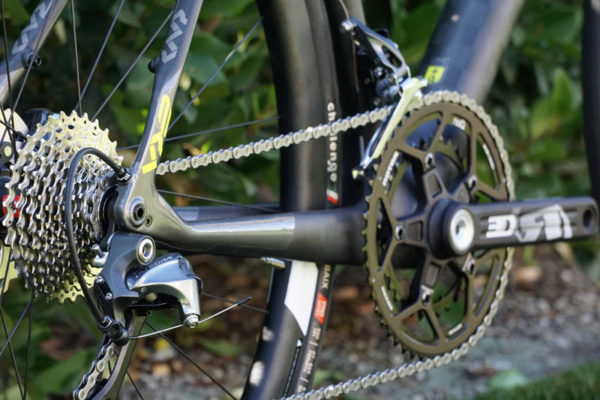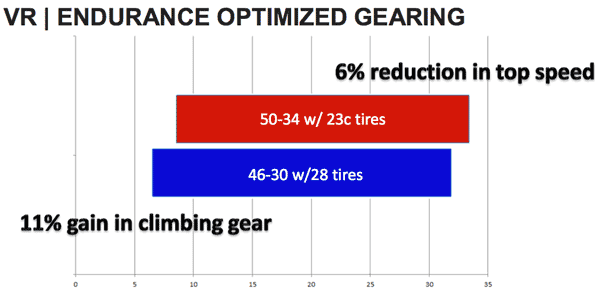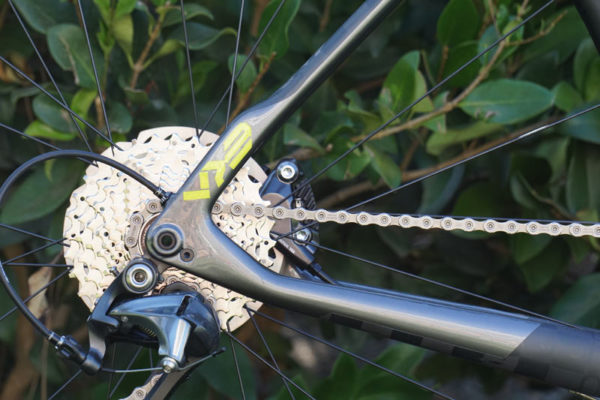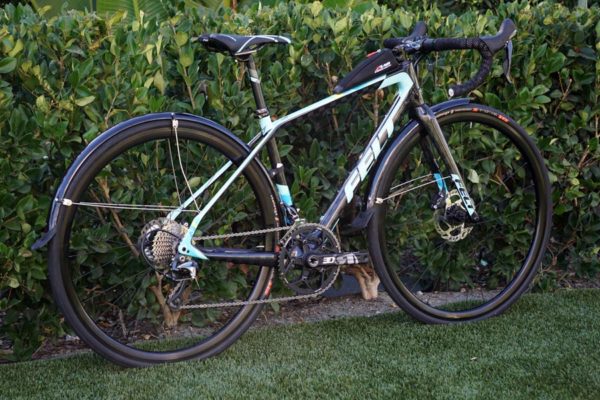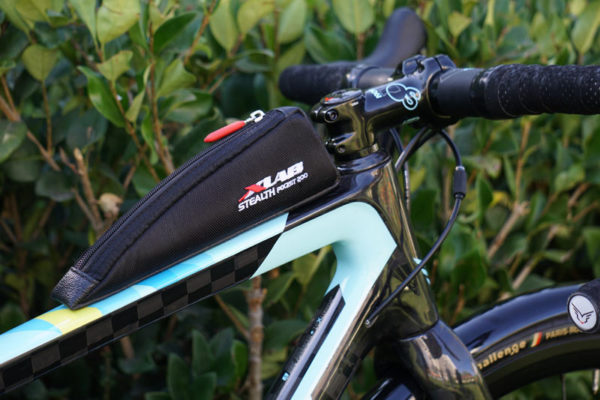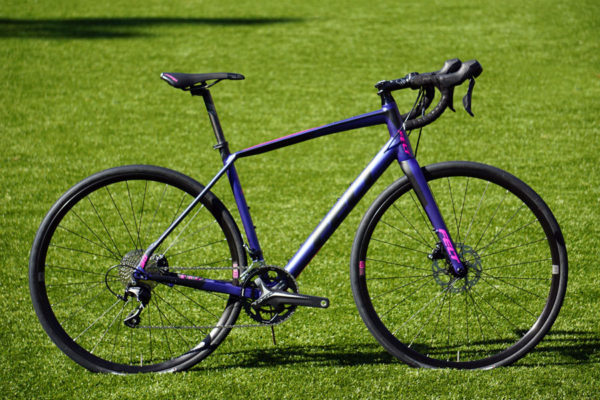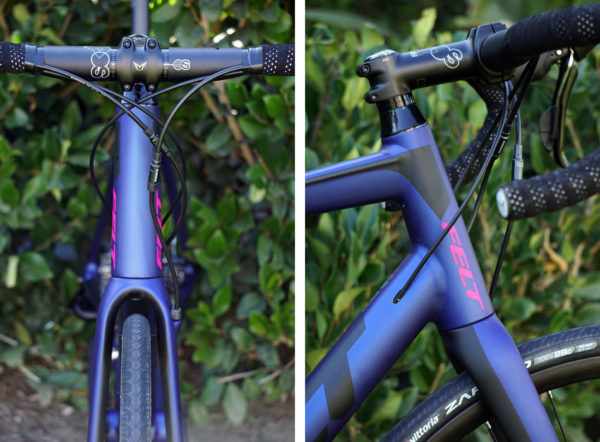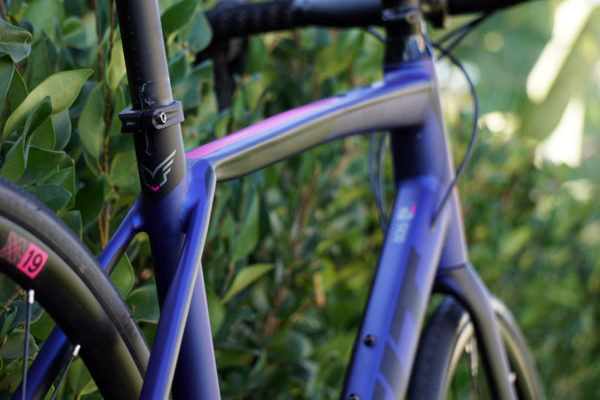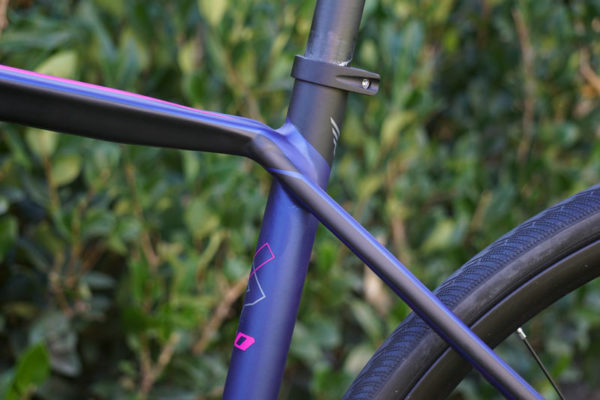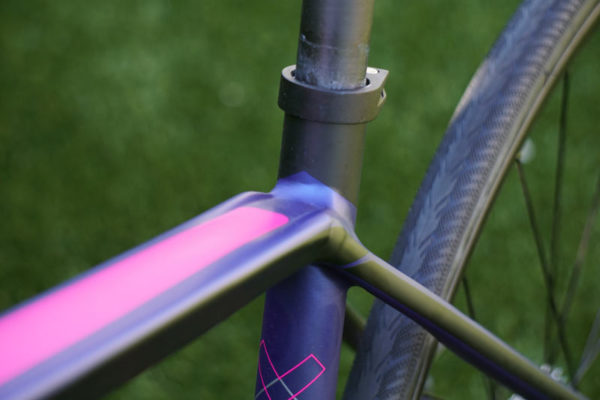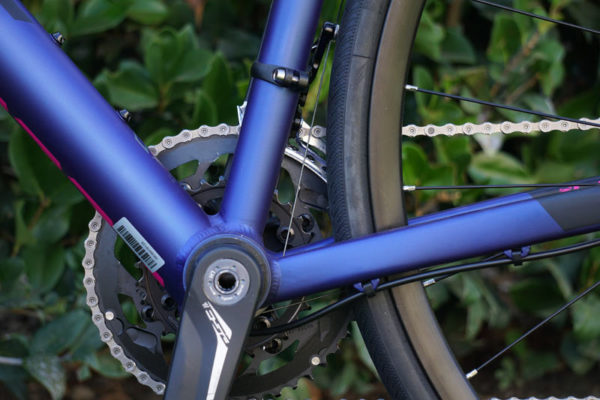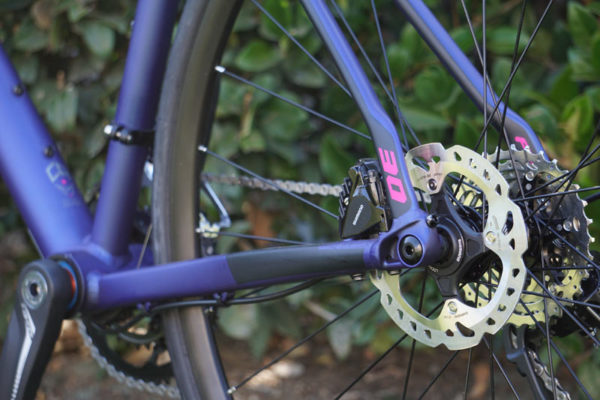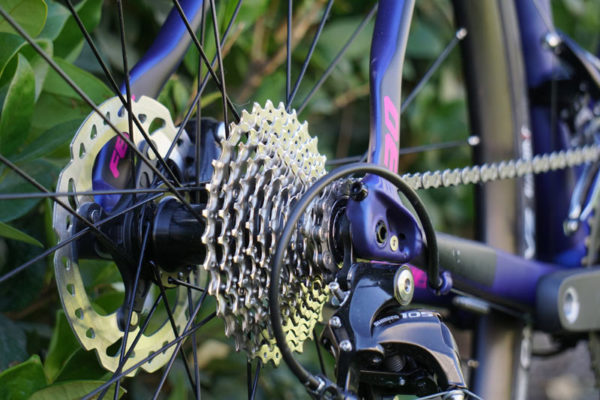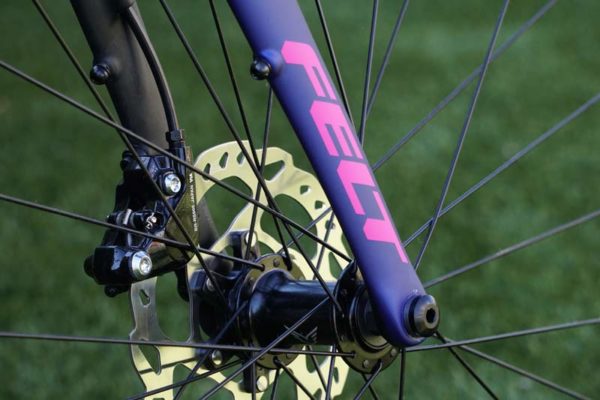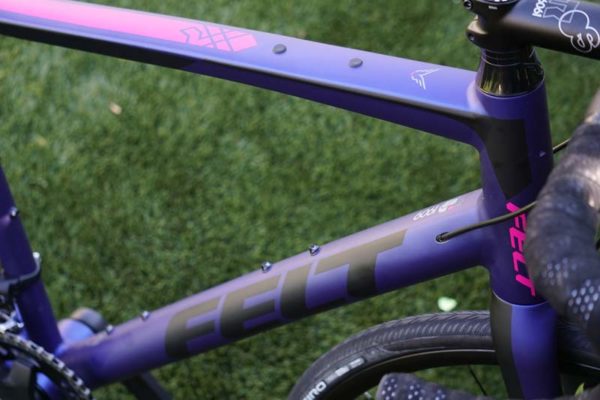For 2017, Felt has completely reshaped their top two road bikes, making two incredibly well rounded yet distinct models for road racing and endurance riding. The new FR replaces the F race bike, and the VR expands the combined versatility of the outgoing Z and V endurance series.
Starting with the FR, this new bike was designed to be “The definitive road race bike”. It was developed using their FRD (Felt Racing Development) process, which starts with a clean sheet getting lines and ideas drawn from pro racer input, then moves through FEA and lab testing then real world testing. The first two FR prototypes were brought to show the team just before the 2016 Amgen Tour of California. Robin Carpenter (Holowesko-Citadel Hincapie development team) hopped on one in the parking lot, tooled around for a minute, then decided to race it the next day. So, it’s a top level race bike, but it’s also an everyman’s road bike.
“The F was always a nervous, pro race only bike,” said founder Jim Felt. “But with the geometry and layup tweaks our team made, it really made the bike more approachable.” In other words, the pros raced the same frame they sold in the store, but what the pros ride is not necessarily what everyone else should be riding. But, we consumers are a silly lot, wanting what the pros ride and all, so they decided to make the bike better for us without diminishing its racing pedigree…
All of Felt’s carbon bikes are made with size specific layups to ensure the smallest frames ride the same as the largest based on the anticipated range of rider weights on each. This now also includes different lower headset bearing sizes, with smaller frames using a straight 1-1/8” steerer, medium range frames going with a 1-1/4” and the larger ones getting a full 1-1/2” taper. Different fork rakes provide size appropriate steering geometry, too.
TeXtreme allows them to use fewer layers of carbon compared to traditional woven carbon fiber sheets, so higher end models can be lighter without losing any strength or stiffness. That, plus previously unavailable materials and refined layup schedules, gave them their lightest ever road frame. Claimed weight is 685g for a size 56 FRD, which is 34g lighter than the outgoing F FRD bike. Fork weight is as light as 285g with uncut steerer and the expander glued into place. From the FRD’s premium carbon (TeXtreme + UHC Ultimate) to the next level down (TeXtreme + UHC Advanced), the frame gains about 80 grams (for size 56, claimed weight is 765g). The disc frame adds about 100g, and that fork will be a little heavier, too. More on the weights in a followup post.
BB386 comes from their cyclocross bikes to the road, giving them a wider BB shell so they could thicken the non-driveside chainstay to maintain overall stiffness as the driveside stay gets a little thinner to improve overall tire clearance. The result is increased tire capacity of up to 28mm tires and a stiffer drivetrain section.
The geometry, particularly the stack and reach, was updated to put the rider “into” the bike instead of on top of it. The average stack increase on the new model was 19mm, which is divided between the headtube and fork. Even though this required adding material, the complete bike is lighter, and it improved front end stiffness. The added material was necessary to make the head tube taller, but mass was reduced overall by adjusting wall thickness, removing the seatstay bridge and other tweaks throughout the frame.
The increased fork height let them design it with a less abrupt crown transition, which let them run more continuous fibers to reduce vibrations. Most of the frame is full carbon, but they do use a molded-in alloy bearing race in the headset because it requires less carbon build up to reinforce it than a full carbon race would, so it saves weight. It’s more labor intensive, but the goal on the FR was to make it as light as possible.
To keep the rear end up to speed with the rest of the bike, they also use specific carbon blends in each section of the bike to put the right performance (stiffness, flex, etc.) in the right place. Further “chassis tuning” yielded bridgeless seatstays that run outside the seat tube and blend more directly into the top tube. This design removed any rider input on the frame from potentially bending the stays slightly and “wagging” the rear end.
Think of it as a wider bracing angle for the seatstays. More importantly, though, it allowed the seat tube and seatstays to flex slightly, helping keep the rear tire in better contact with the ground and letting it flex vertically a bit to improve ride comfort. Eliminating the seatstay bridge also gave them more freedom in the stay’s design to accomplish those goals, and it saved a bit of weight.
So, with no bridge, the brakes moved under the chainstays. There’s also a disc brake version coming, which will use the low flat mount standard and thru axles, leaving the new seatstay design unaltered so the ride characteristics should carry over virtually identical.
Cable management allows for all drivetrain types – wired, wireless and mechanical. For carbon frames, the mechanical shift cables are run externally so they didn’t have to punch holes in the downtube and then reinforce that area. They say the typical entry point on the downtube is a high stress area, so the best solution was to run mechanical shift lines outside the bike. The rear brake, however, does run internally and enters on the front/side of the headtube. This keeps limits its chances of getting contamination in the line and minimizes the size of the hole they need to make in the headtube versus running all the drivetrain cables into the frame there, too. Electronic shift systems will send the wire into that same headtube port.
As a package, the FR is lighter by 5%, yet improves headtube stiffness by 4%, bumps stack height by 4% and makes the “Rear Tire Contact Patch” stiffness a whopping 30% better. What is RTCP? It’s that lack of “wag” that can result in the rear tire torquing out of plane with the rest of the bike and make it feel sloppy. The result is a bike that should feel much snappier, but also more comfortable. We’ll have our first impressions posted shortly.
We’ll also have a full post on actual weights, specs and pricing, but wanted to call out a few features on the FR2 that make it a standout. It comes equipped with a single-leg Pioneer power meter on the left crank and a coupon for discounted upgrades to dual leg if you want.
It also gets the Shimano Di2 Sprinter’s shifters pre-installed.
All FR and VR models also get reflective handlebar tape and reflective paint/graphic hits on the rear end of the frame to boost visibility and safety without you having to add anything. Brilliant.
The FR will also come in alloy with hydroformed tubes designed to mimic the performance and ride quality of the carbon bikes – as much as possible anyway.
The 30 and 40 versions keep the full carbon fork, but the entry level FR50 and FR60 get a carbon-legged fork with alloy steerer and crown and a standard threaded BSA bottom bracket shell.
The rear end has a similar transition from seat stay to top tube…
…but the brake is in its usual spot.
Women’s versions use the same frames and forks, but get different touch points (saddles, bars, stems) and alternate (and arguably better) paint and graphics. More on that below.
2017 FELT VR
The VR took a lot of what they learned from the Z and V endurance road bike series and expanded their capability. The Z was upgraded in 2014 with disc brakes and has been their best selling model for years thanks to its more upright geometry. The VR picks up where it stopped and should appeal to the burgeoning gravel and adventure road bike market without forgetting its long-distance, gran fondo fans. Felt says it’ll even work as a fast pavement pounder for local club rides, except if you want to see what’s down that dirt road you always blow past, now you can.
Compared to the Z, goals were to increase the rear end compliance, so the seatstays, seat tube and top tube shapes were all completely redesigned.
It’s design looks very similar to the FR in that there’s no seatstay bridge and the stays meet the top tube outside and in front of the seat tube, but the layup and purpose of each is geared more toward comfort.
For example, the seatstay profile has a wildly varied profile from top to bottom. The middle section is flattened to enhance flex without getting noodly side to side, and the bottom is wider and flared to boost stiffness and clear the disc brake caliper.
The headtube-to-top tube transition went through a lot of profile iterations to find the right mix of stiffness and comfort, but their gravel/cyclocross bike engineer Bryan Norvell says it is on the stiff side for a bike in this category. The VR does use a full carbon headtube, including the bearing races. It’s a little heavier, but it’s less costly to produce and yields a more consistent construction.
Note the ridge running down the side of the top tube to enhance rigidity.
Moving back, the top tube tapers to become flatter and thinner as it meets the seat tube in the middle. Norvell said they wanted to go thinner, which would have created a better pivot point at the top/seat tube junction and allowed for a little better fore/aft seat tube flex to mute bumps, but they needed to keep room for a bladder to be inserted in the molding process. Even so, there’s designed-in flex for the seat tube.
It, too, uses BB386 to spread the chainstays. And it uses the thicker non-drive, thinner drive side chainstay them as the FR to give it a max recommended tire size of 30mm (based on ISO safety standards), but…
…this graph shows that wider tires will fit.
All models get disc brakes, and they get “sub compact” gearing that allows for all day climbing. How many times have you said “Gee, I really wish I had harder gearing?” Almost never, right? But having a couple easier gears when climbing or hitting those gnarly traverses that just sap your energy are always welcome.
So, they gave it a 46/30 double on most models, which put a 1:1 or lower gear ratio on the easiest combo. Yes, they admit this reduces your top end slightly, but it gives you a much easier time up the hills even with the added diameter of bigger tires.
Whereas the FR had light weight as a premium consideration, the VR could get away with a little extra material, so they made the head tube port large enough to accommodate both electronic and mechanical drivetrains inside the frame. This keeps everything running smooth regardless of where you take it.
Not a great flash photo, but you can see how the logos and graphics are reflective.
On the carbon frames, they molded the steel fender mount inserts directly into the frame during construction, as opposed to bonding them in/on afterward, which yields a stronger, more durable piece. Since the mid-mount design won’t work with standard fenders, they created their own fender kit with a clamp-on seatpost mount.
Look for that to retail for about $50 for the set, and they won’t reduce the recommended max tire size either. They ship the bikes with custom fender attachments to work with the design, which looks fantastic and covers a massive portion of your tire.
They also added an additional water bottle mount on the top tube for a Bento Box storage bag
Save for a couple details, the alloy VR looks remarkably similar to the carbon one.
The shaped, ridged top tube is present…
…as is the indented top tube junction to encourage seat tube flex.
Higher end alloy VRs will get the BB386 shell, lower end models will use BSA threaded.
The small differences come in the accessory mounts. On the alloy frames, the rear fender mount is in the usual lower spot near the axle. Felt says on both this and the carbon bike, they’re only for fenders and not designed to carry a rack or load.
The higher end alloy bikes share the carbon fork, which means the same fender mounts and 12mm thru axles.
In addition to the Bento Box mount, there’s a second downtube water bottle mount near the bottom bracket, giving you room for three bottles inside the front triangle on most frames.
Across most of range of both bikes, you’ll find sizes 43 to 61 so almost any size rider can find something that fits correctly, men or women, and thanks to the size specific layups and forks, they should all ride well, too. Look for a followup post later today with specs, pricing, models and weights… plus first ride impressions.
Take a closer look at our first ride impressions of the racier FR and endurance VR, plus specs, pricing, and weights on both bikes…
